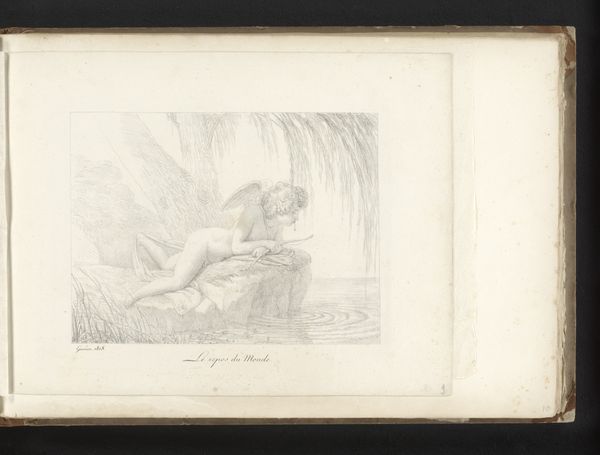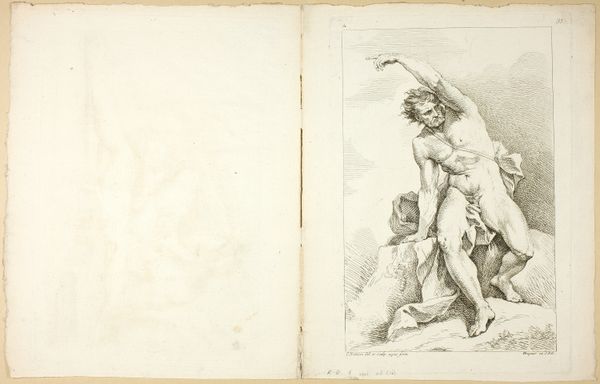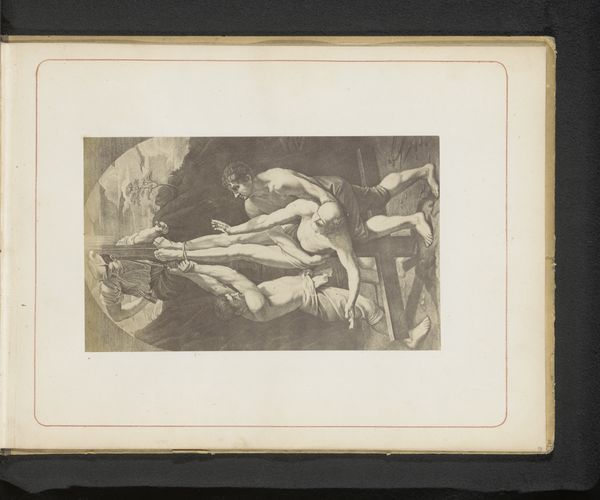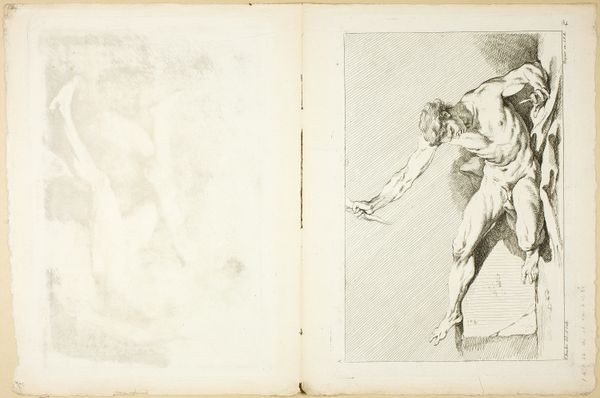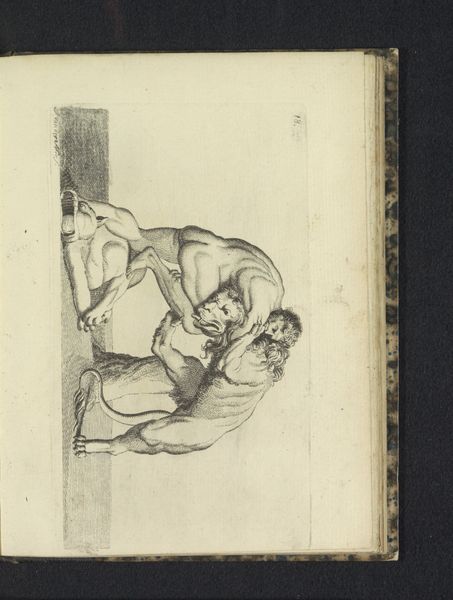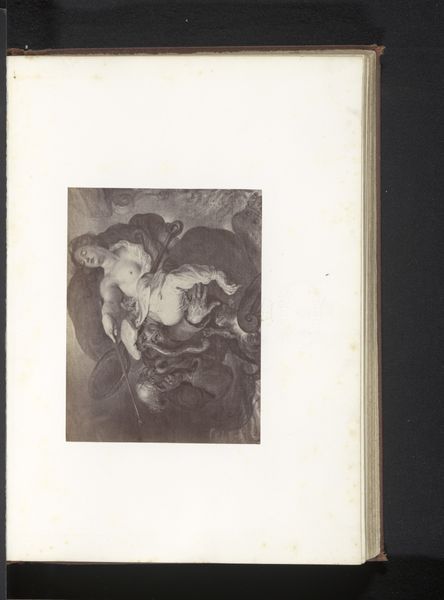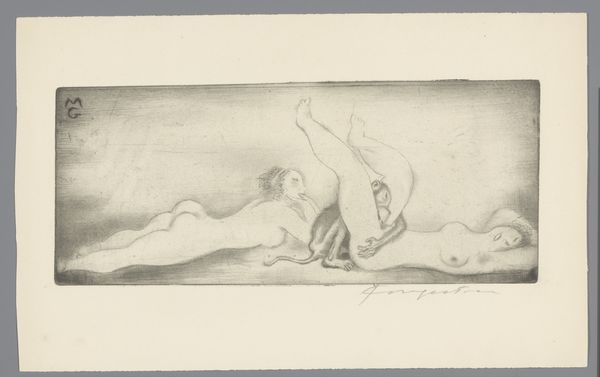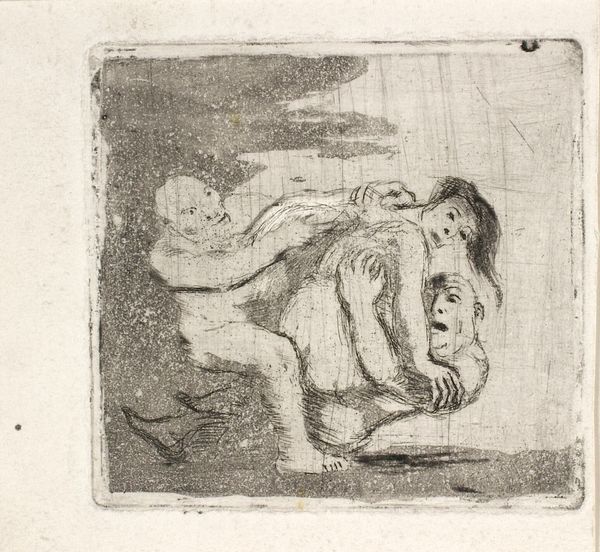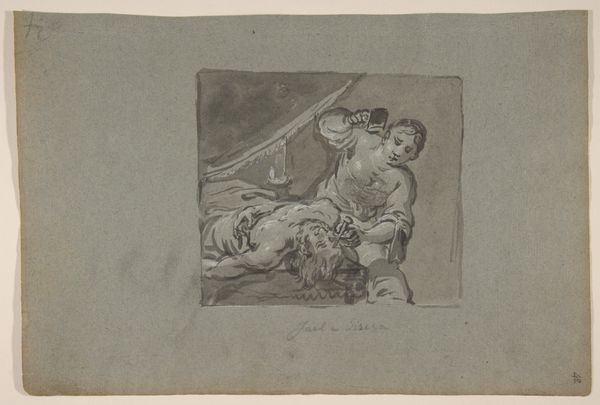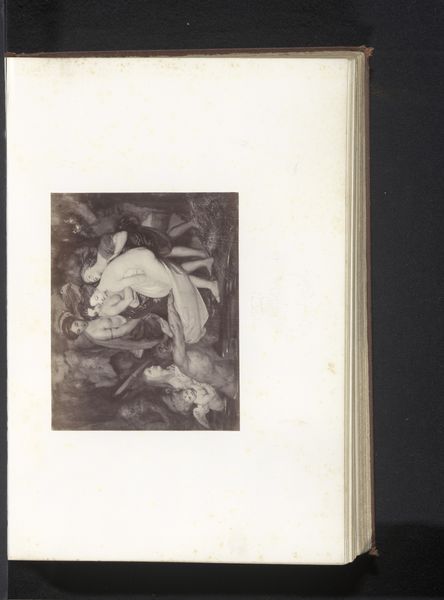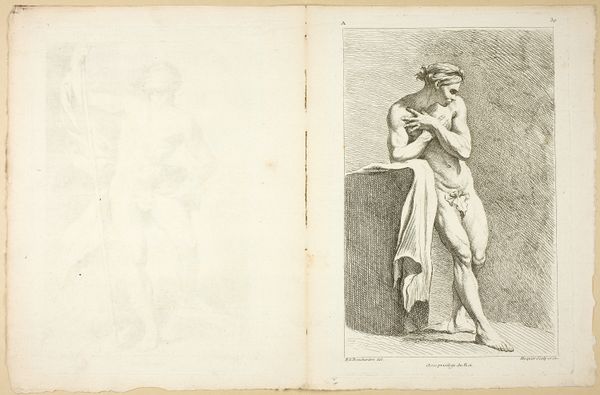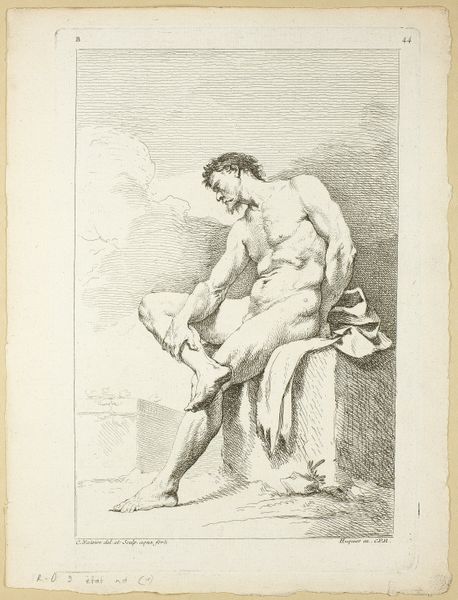
Figure (recto and verso), from Seconde livre de figures d’Academies gravées en Partie par les Professeurs de l’ Académie Royale Possibly 1745
0:00
0:00
drawing, print, etching, paper
#
drawing
#
baroque
# print
#
etching
#
figuration
#
paper
#
nude
Dimensions: 186 × 277 mm (recto plate); 190 × 283 mm (verso plate); 233 × 305 mm (sheet)
Copyright: Public Domain
Jean-Baptiste Perronneau created this print, "Figure," using etching, sometime in the 18th century. Look closely, and you'll see the process has yielded two distinct images on either side of the sheet. Etching, a printmaking technique, involves coating a metal plate with a waxy, protective layer. The artist then scratches an image into this layer, exposing the metal. An acid bath etches the exposed lines, creating grooves that hold ink. The plate is then inked, wiped clean, and pressed onto paper, transferring the image. The recto shows an under-etched figure and the verso a study of a male nude figure, showing great detail in the face and body, in the style of the Académie Royale, which would set artistic standards for centuries. What I find most fascinating about the printmaking process is that each impression is both an original artwork, yet also bears the mark of mechanical reproduction. It's this tension that really gives it a unique cultural significance. The level of labor involved is quite significant, reflecting the broader social dynamics of art production and consumption in the 1700s. This piece challenges our traditional understanding of fine art by revealing the deep connections between materials, making, and cultural context.
Comments
No comments
Be the first to comment and join the conversation on the ultimate creative platform.
